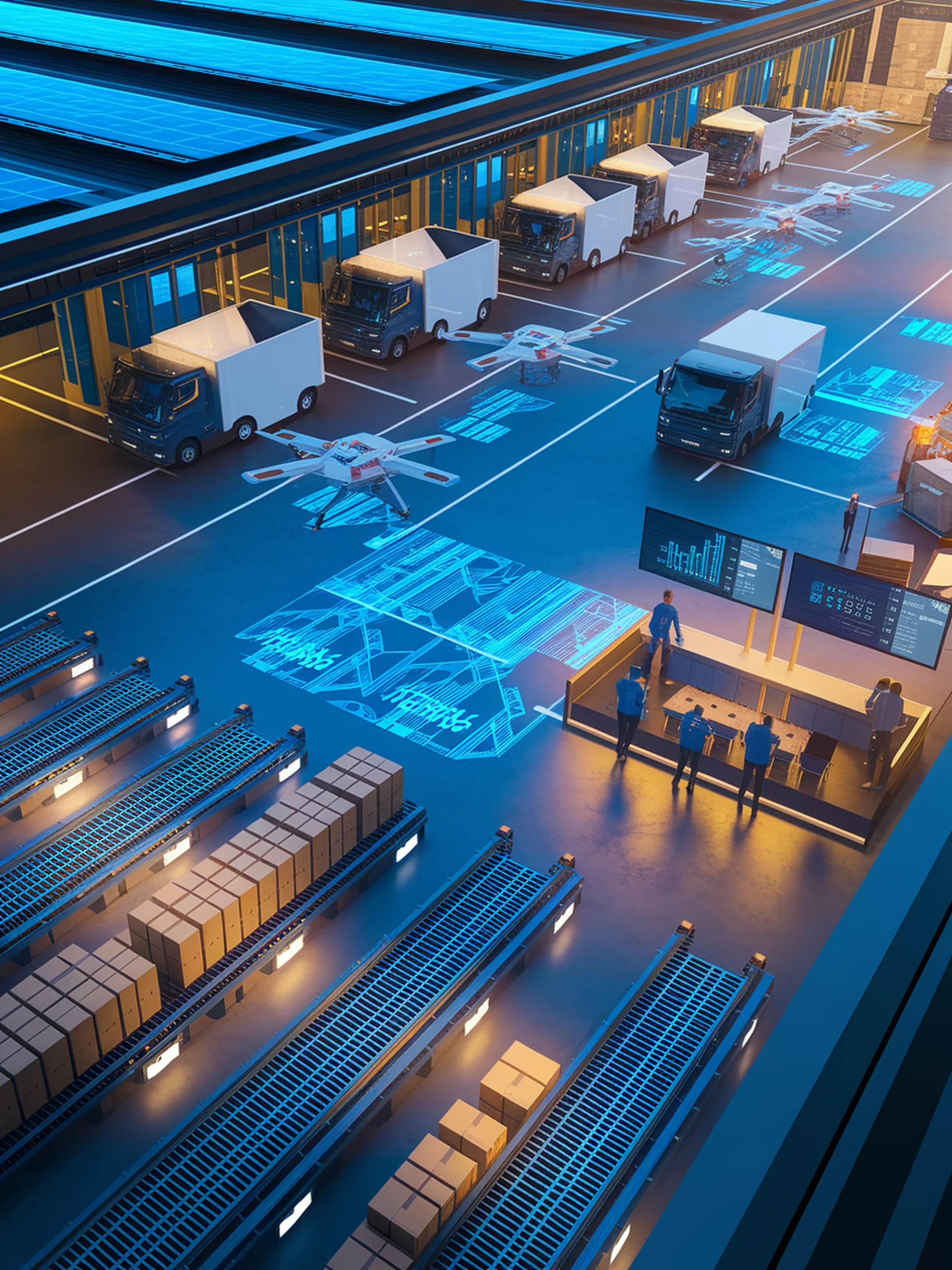
Logistics and Supply Chain Innovation
End-to-End Optimization Through Autonomous Agents
Digital Supply Chain Management
- "Digital supply chain manager" agents coordinating across networks
- Automated inventory optimization balancing stock levels against demand forecasts
- Dynamic routing and scheduling adapting to real-time conditions
- Predictive maintenance preventing equipment failures before they occur
Autonomous Physical Systems
- AI-orchestrated robotics in warehouses and fulfillment centers
- Drone and autonomous vehicle coordination for last-mile delivery
- Automated quality control using computer vision and sensors
- Self-organizing factory floors optimizing production in real time
Supply Chain Resilience
- Risk monitoring agents continuously assessing potential disruptions
- Scenario planning evaluating alternative suppliers and routes
- Autonomous response to disruptions without human intervention
- Collaborative planning across multiple organizations' systems
Sustainable Operations
- Carbon footprint optimization balancing speed with environmental impact
- Resource efficiency agents minimizing waste throughout operations
- Circular economy enablers identifying reuse and recycling opportunities
- Compliance monitoring for evolving environmental regulations
Implementation Roadmap
- Begin with decision support agents providing recommendations to humans
- Progress to semi-autonomous operation with human approval for major changes
- Develop agent-to-agent interfaces between internal systems
- Expand to cross-organizational agent networks with partners and suppliers
"The supply chains of 2030 will operate as autonomous nervous systems, sensing changes, making adjustments, and maintaining optimal flow with minimal human intervention - all while being more resilient and sustainable than today's manually-orchestrated networks."